I have posted Desert Trip photos about as fast as the desert tortoise crosses the road, probably even slower.
RandomTruth did a great run-down of the species we saw and shared some great pictures, so be sure to check his post out. I also recommend checking out his Flickr account linked in the post for some awesome flower pictures. It was such a treat to have a botanist on the trip with us to tell us what each of the 70+ flowers we saw were. In the past we were confined to "That's a pretty flower." "Have we seen this one yet? It is pretty." Randomtruth taught us herpers a lot about the flora of the Mojave.
Speaking of crossing the road, that is the only time you should ever touch a desert tortoise. If you find a tortoise on the road, you should pick it up lifting it no more than 6" off the ground, still very upright and move it 50 feet or so off of the road and make sure it keeps heading away from the road. It is important to do it in this manner so that the tortoise does not expel is bladder in defense and lose all that precious water. This is the only time you are legally allowed to touch these guys and CTC strongly recommends following this law. On our 2011 trip, we found three different tortoises. One male, one female, and one sex undetermined. See, unless they are pretty big it is tough to tell sex without looking at the bottom of the shell or carapace which is slightly more concave in males. They notch between the anal scutes may also have a different angle if you know what you are looking for. But since we cannot look at the ventral carapace of desert tortoises because we cannot pick them up the only thing we can really determine sex with is tail length. Males have a longer tail as it has to house their hemipene.
Here are a the three tortoises we found in the Eastern Mojave.
 |
| Moving across the road all on his own |
 |
| Off the road and still moving faster than I can post |
 |
| Found a good hiding spot |
 |
| Creosote flowers on the lips |
 |
| What a backdrop for this sweet gal. Can you guess where we found her? |
I did not have a blog during the time of our 2010 trip so I will include pictures of the three tortoises we found in 2010. In 2010 we found one male that had to be moved off of the road, a huge female almost right in our camp and a very small yearling. The yearling was spotted from the car in the side of a bank as we drove in reverse because we had hit an impassable section of road with no turn around point. Talk about some good bizarre luck!.
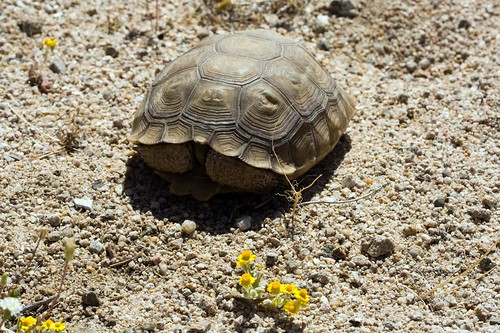 |
| Male after moving it off the road. First wild desert tortoise for me. |
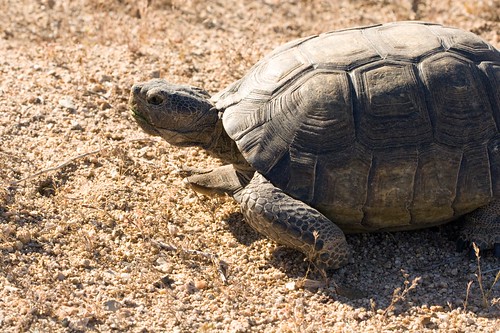 |
| Female roaming near camp. |
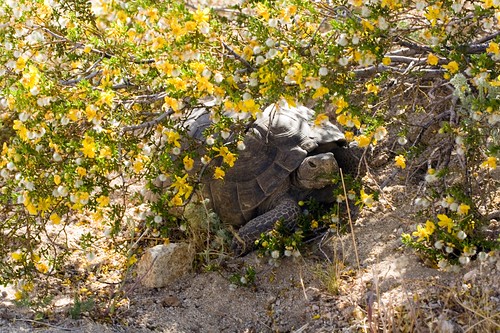 |
| Big Female hiding in the creosote a few hours before the above picture above was taken |
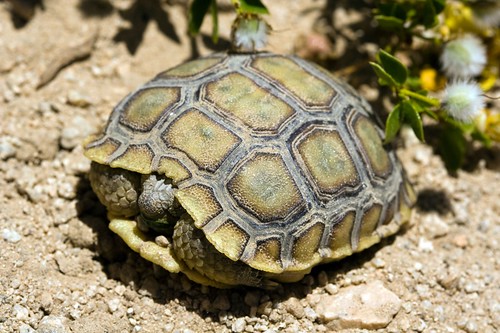 |
| Yearling hiding from the monkeys |
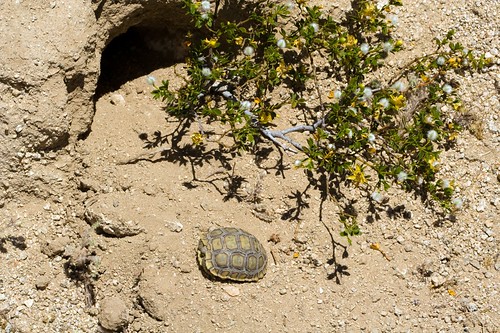 |
| Yearling near hide spot |
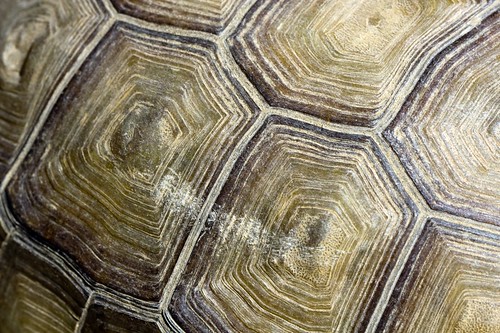 |
| Shell close-up |
If you want to familiarize yourself better with tortoise anatomy I recommend the aptly names
Anatomy of a Tortoise, by J. Stuart Thomson. I got this book about 3 months ago from the publisher, but it looks like it has gone out of print and now costs $64-222!. Maybe the library or peruse my copy if you are in my neck of the woods?













gorgeous creatures. LOVE the yearling's shell patterns. enjoying this trip thru both you and randomtruth. loved the "that's a pretty flower" routine. so me...
ReplyDeleteOh, man! That is so incredible!!
ReplyDeleteOne of my "lifer" wishlist species!!
Great photos.
Trailblazer:
ReplyDeleteFind some excuse for why you have to be in Los Angeles or Las Vegas next May and come join us.
Hey JK!
ReplyDeletethat would be awesome....
In 2013 the Joint Meeting of Ichthyologists and Herpetologists is going to be in Albuquerque, NM....that would put me relatively close to you guys.....maybe I could swing up!
Thanks for the invite!
That's a fine collection of Gopherus. The juve, of course, is just plain awesome. Next time we're gonna get kit fox pics. :)
ReplyDelete